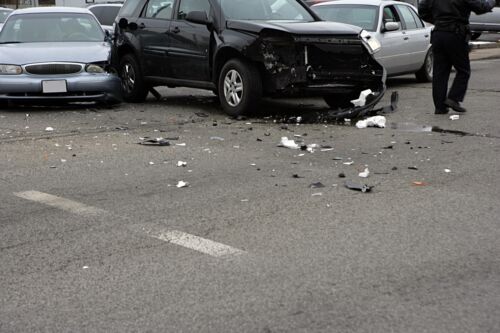Multi Vehicle Accidents in Bellevue: Who’s Liable?

If you were hurt in a Bellevue car accident that involved more than two vehicles, you may be wondering, “who is at fault in a multi-car accident?” These types of collisions are legally complex — and fault isn’t always straightforward. In fact, multiple parties may share the blame for your damages. While there are many factors that can impact liability, it’s essential to have an experienced personal injury attorney by your side who can help you navigate the legal process and work to ensure the at-fault parties are held accountable.
What is a multi vehicle accident?
A multi vehicle accident refers to a collision involving three or more vehicles. They usually happen on busy roads, highways, or at intersections, and are triggered by the actions of one driver. There are several common ways multi vehicle accidents can occur, including the following:
- Chain reaction accidents — Chain reaction accidents are one of the most common reasons multi vehicle accidents happen. Specifically, a chain reaction accident causes a domino effect where the force of the initial impact pushes that vehicle forward into the one ahead of it. The severity of these types of collisions can depend upon the speed the vehicles were traveling and traffic density.
- Rear-end collisions — Similar to chain reaction accidents, rear-end collisions can cause a multi-car accident when a vehicle stops short and is struck from behind. If the car in the rear of the second vehicle was following too closely, it may strike it after the initial impact.
- Intersection crashes — Multi-vehicle collisions can happen at any of Bellevue’s busy intersections. These accidents often happen due to a driver’s failure to yield, distracted driving, speeding, or running a red light.
- Left turn accidents — A left turn accident can escalate into a multi-vehicle collision if the initial impact creates a domino effect. For instance, if a driver swerves to avoid the initial left turn accident, they may strike another vehicle and push it into oncoming traffic.
- Highway pile-ups — If a vehicle stops suddenly on the highway, they can cause a chain reaction where several more accidents occur due to vehicles stopping short or swerving to avoid the initial accident. These types of multi vehicle accidents can be particularly severe and involve vehicles of all sizes, including trucks, SUVs, and motorcycles.
Notably, there can be many causes of the initial collision in a multi-car crash. Distracted or impaired driving, mechanical failures, road hazards, reckless driving behaviors, bad weather, and low visibility can all be contributing factors.
How is Liability Determined in a Multi-Car Accident?
When multiple vehicles are involved in an accident, liability can be complex. While the driver who caused the initial collision will typically incur liability, more than one driver may share a percentage of blame in these scenarios. Accordingly, insurance claims may need to be filed against each driver’s insurance company, which can make the process of obtaining compensation for your injuries much more complicated.
When determining who is at fault in a multi-car accident, negligence must be established. A plaintiff in a car accident lawsuit is required to prove four elements to demonstrate another driver’s negligence, including the following:
- Duty of care — All drivers owe a duty of care to others on the road to operate their vehicles safely and exercise reasonable caution.
- Breach of duty — A plaintiff must show that the driver who caused the accident breached their duty of care. For example, they may have stopped short, ran a red light, texted while driving, or failed to observe the right of way.
- Causation — The at-fault driver’s breach of duty must have been the direct cause of the accident.
- Damages — The plaintiff must have suffered an injury as a result of the at-fault driver’s breach of duty.
Typically, an investigation is necessary to assess who is at fault in a multi-car accident. In cases that are particularly nuanced, an accident reconstruction expert may be brought in to analyze the evidence, identify contributing factors, and recreate the sequence of events. Even if inclement weather or low visibility was a contributing factor to the accident, drivers are still expected to exercise reasonable care under the circumstances.
What Happens if I am Partly at Fault for the Accident?
If you are one of the drivers who is at fault in a multi-car accident, you may still be entitled to recover for your injuries under Washington’s pure comparative negligence law — as long as you are not 100% at fault. Also referred to as comparative fault, this doctrine compares each driver’s percentage of blame for the crash. Any compensation awarded to you would be reduced by your share of fault.
It's important to have strong evidence in your case to maximize your compensation. Witness statements, photos or videos of the accident scene, and traffic camera footage can all be crucial when it comes to establishing liability. In addition, your medical records are vital to demonstrate the injuries you suffered and the impact they had on your life. A skillful personal injury attorney can assist you with gathering the evidence you need to build a solid claim.
Contact an Experienced Bellevue Car Accident Attorney
The injuries you may incur in a collision involving three or more vehicles can be severe. A knowledgeable personal injury attorney can help determine who is at fault in a multi-car accident and fight to obtain your rightful compensation. With locations in Burien and Bellevue, Herron Law Office, PLLC is committed to helping the victims of negligence in Washington secure the monetary recovery they deserve for their injuries.
If you’ve been hurt in a car accident due to the negligence of another, we welcome you to contact us for a consultation to discuss your case by calling (425) 600-2580.



